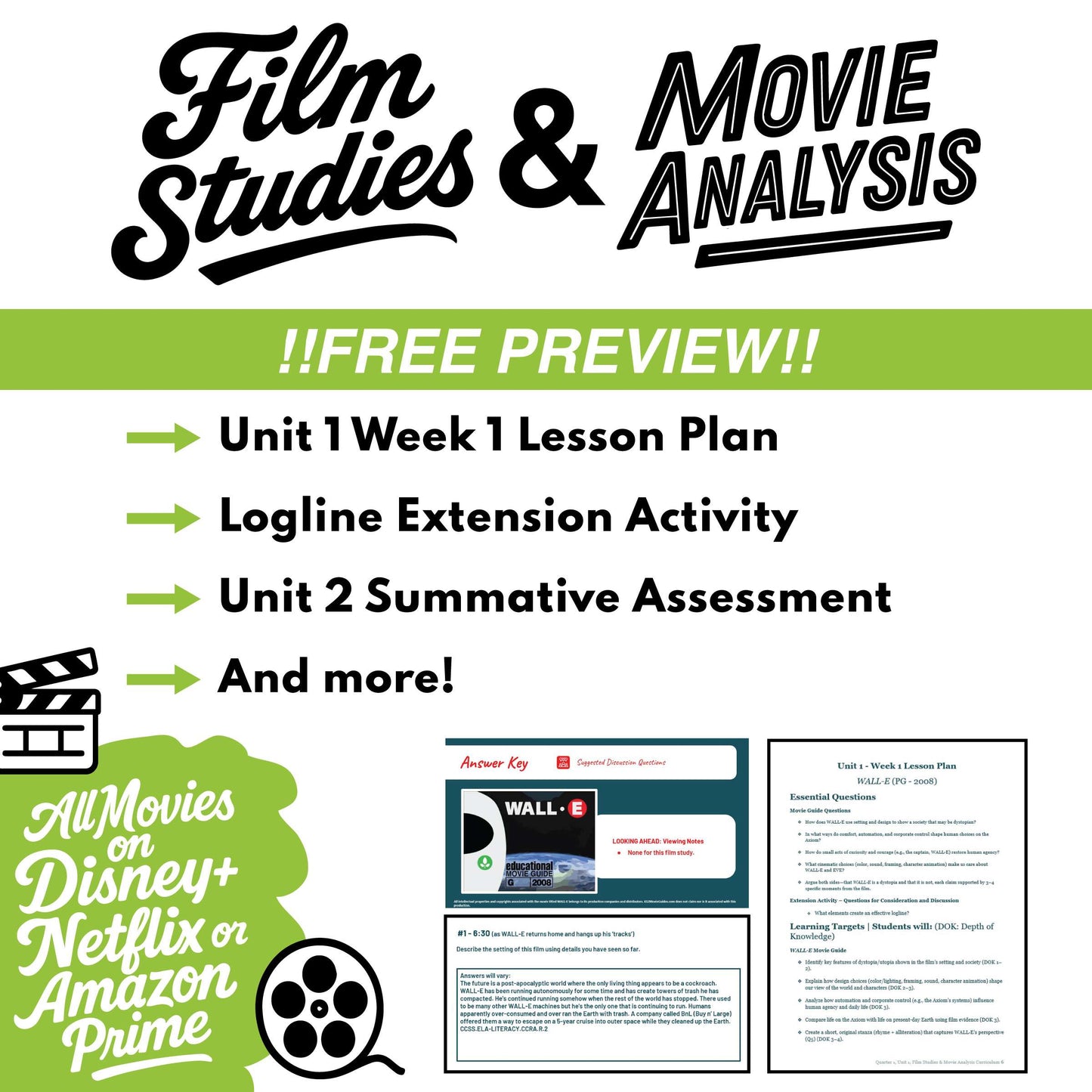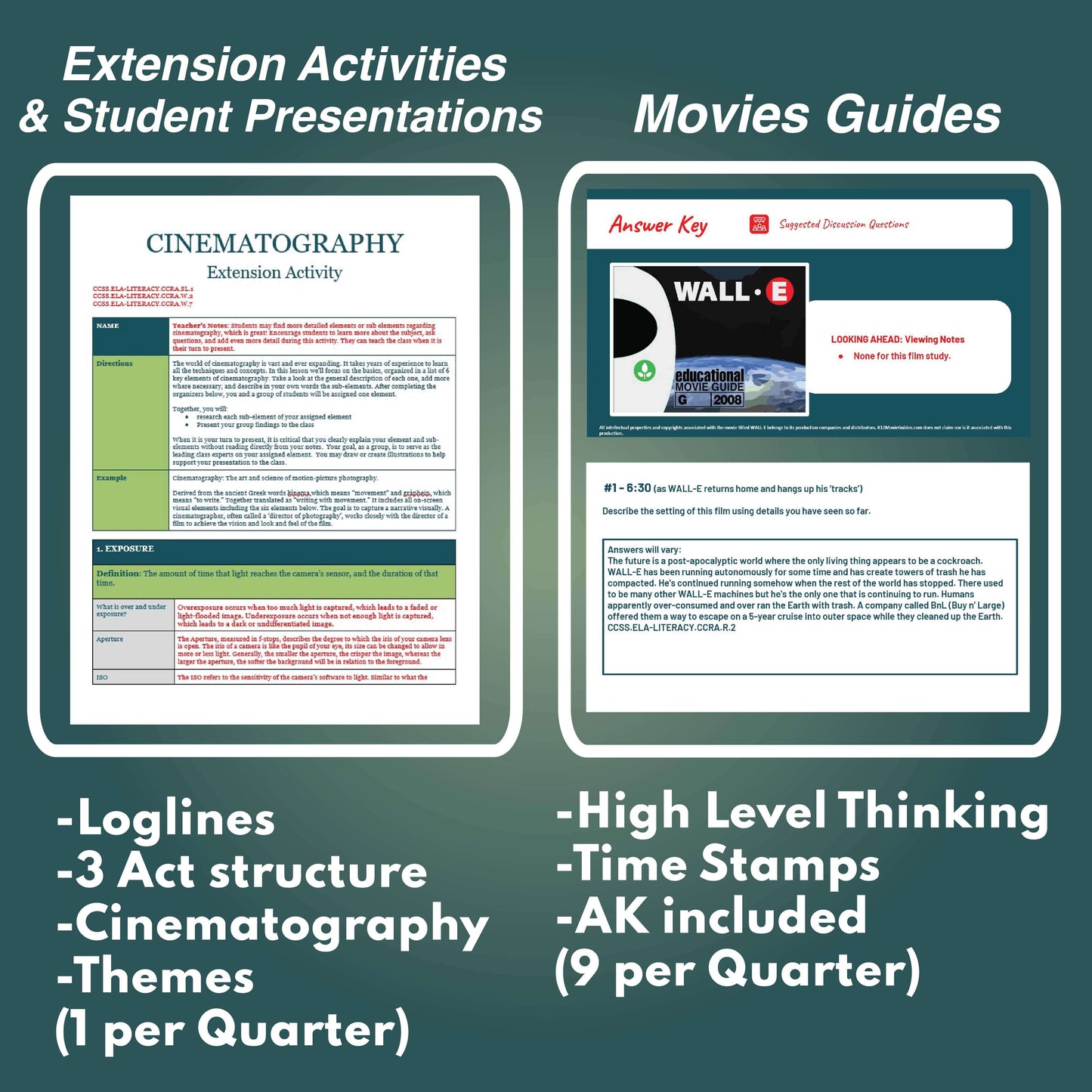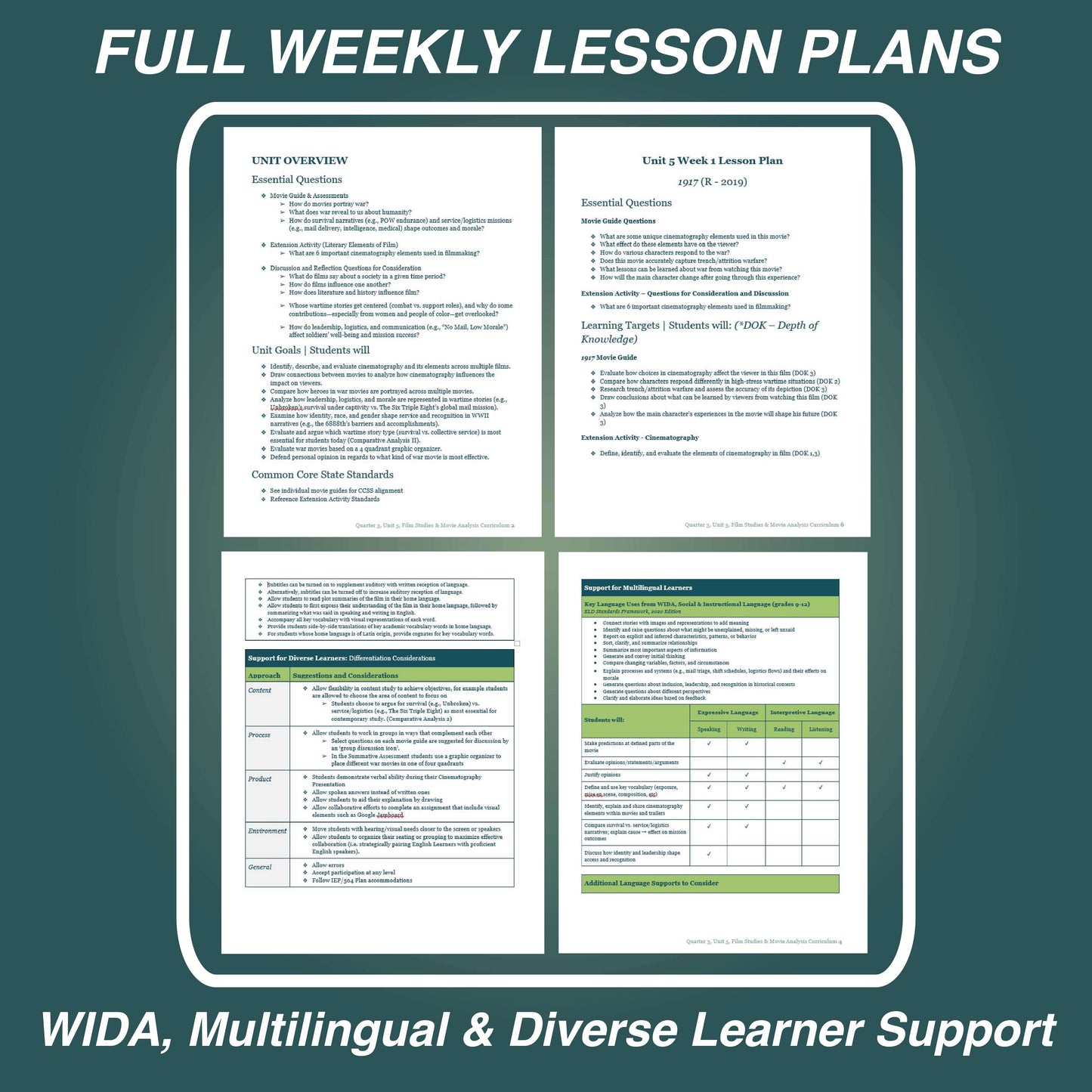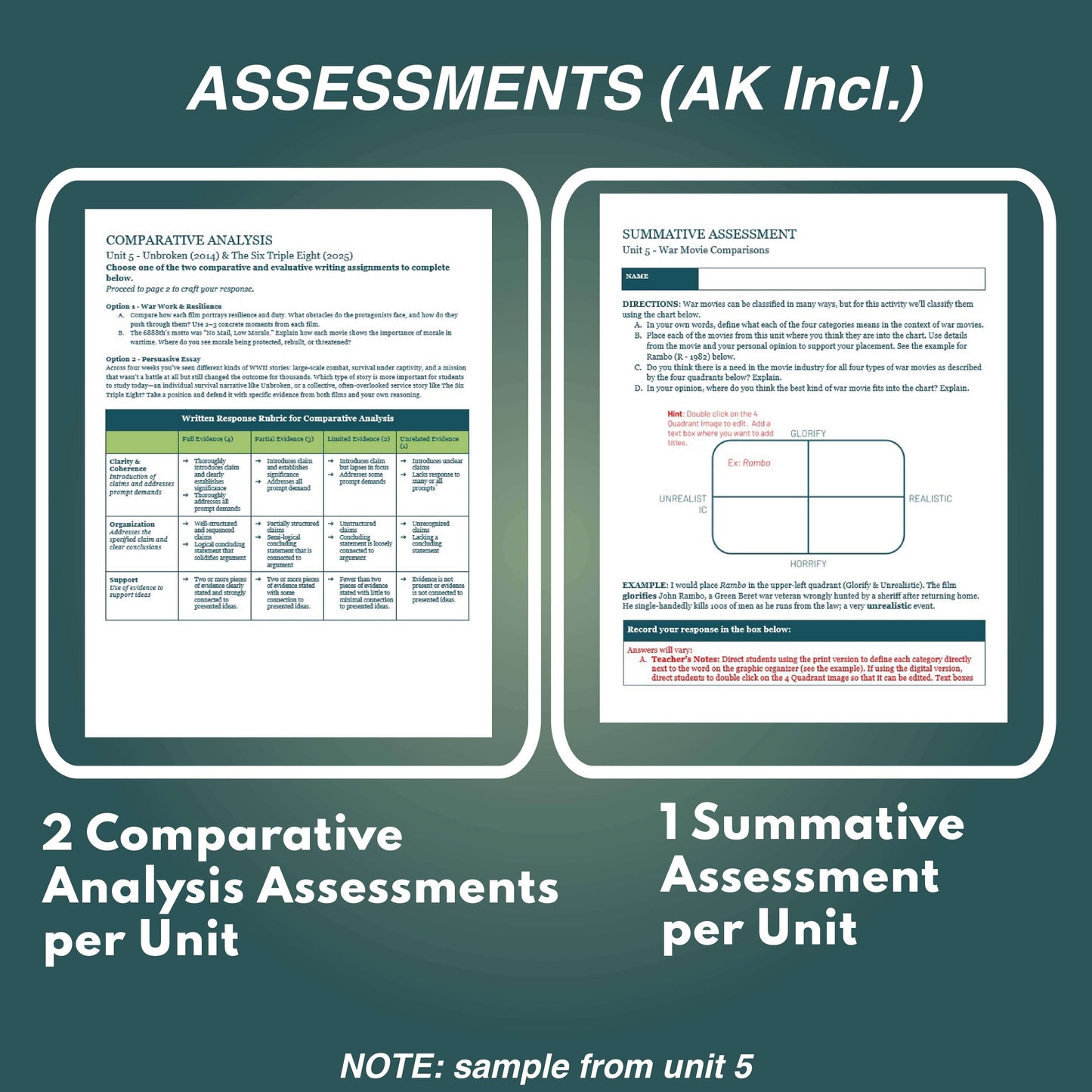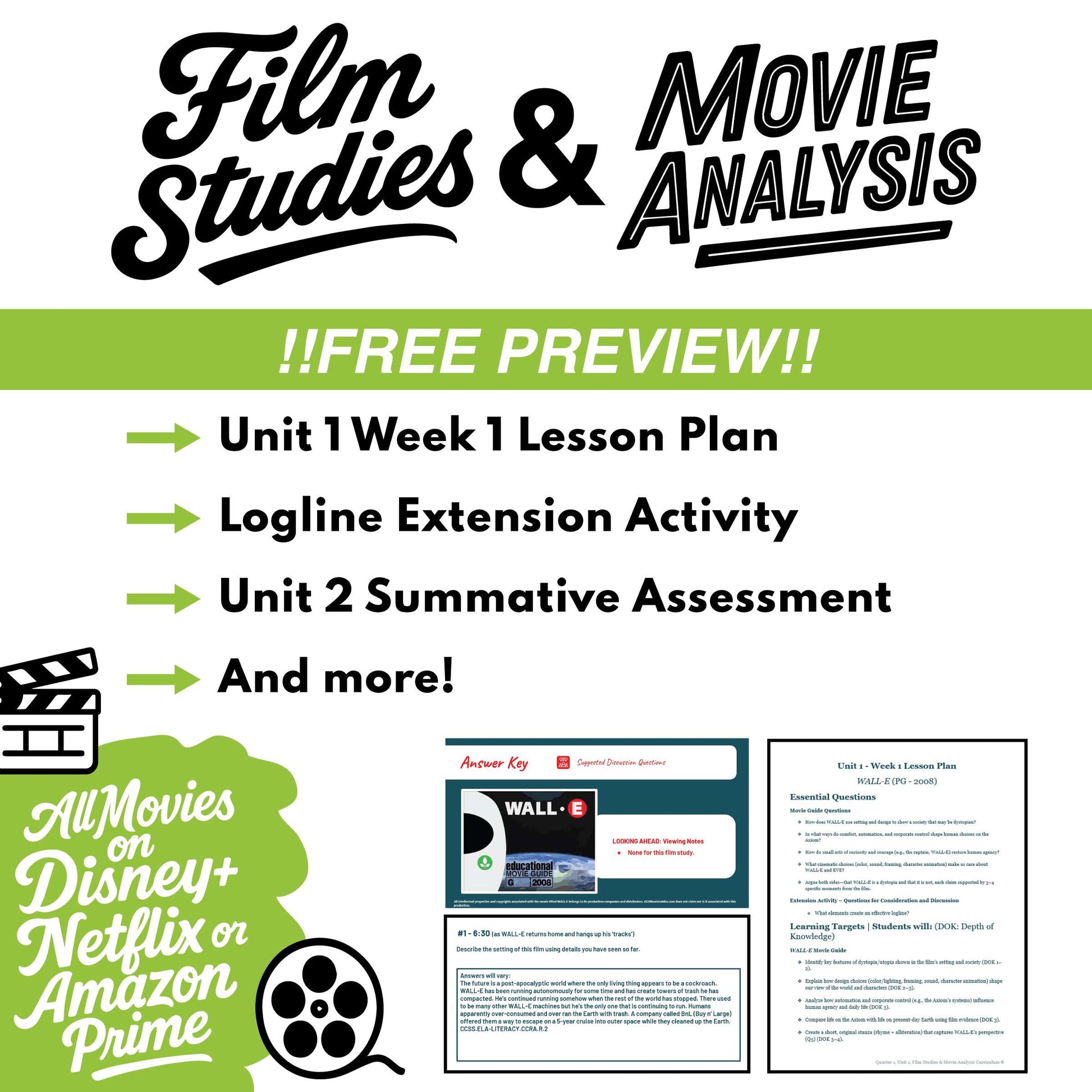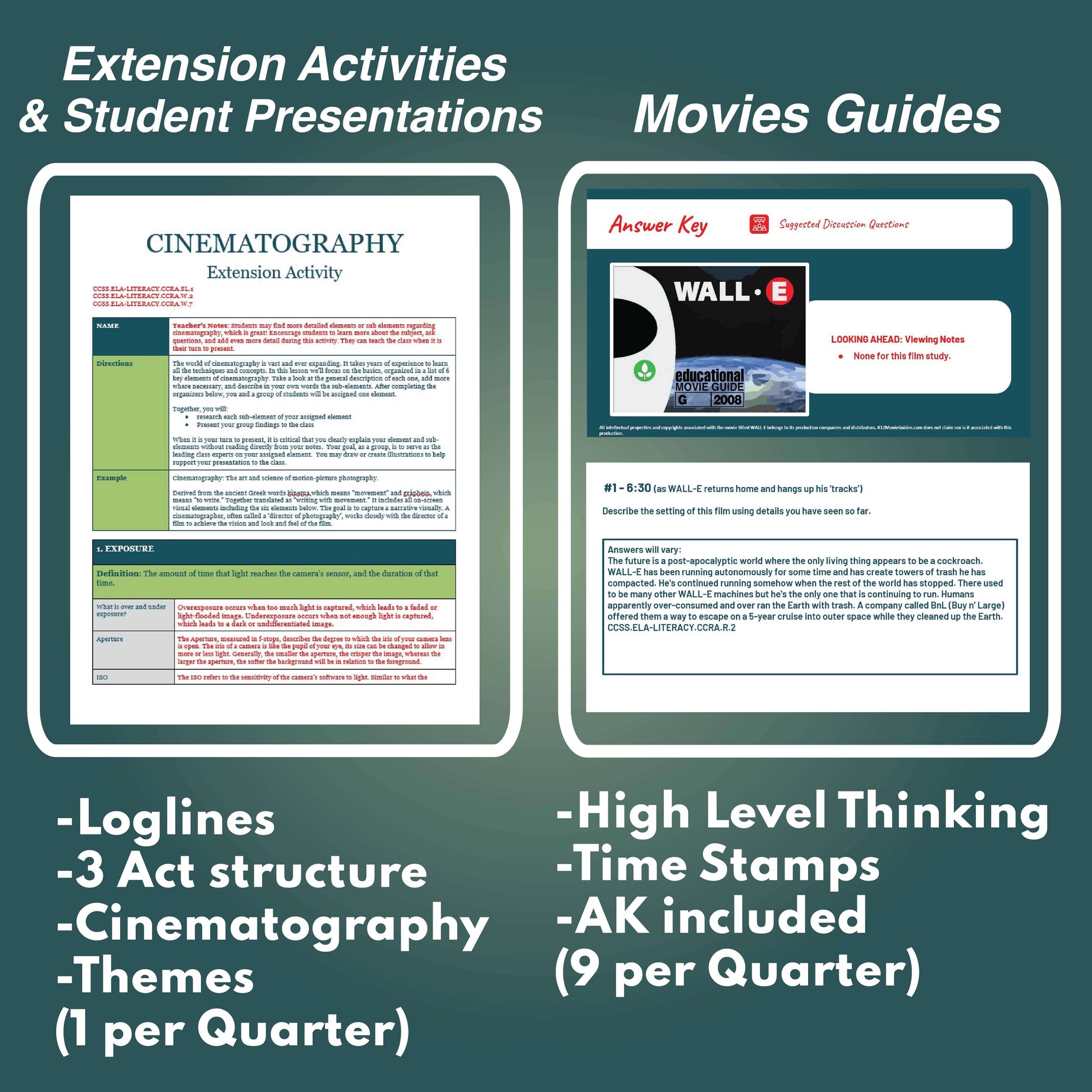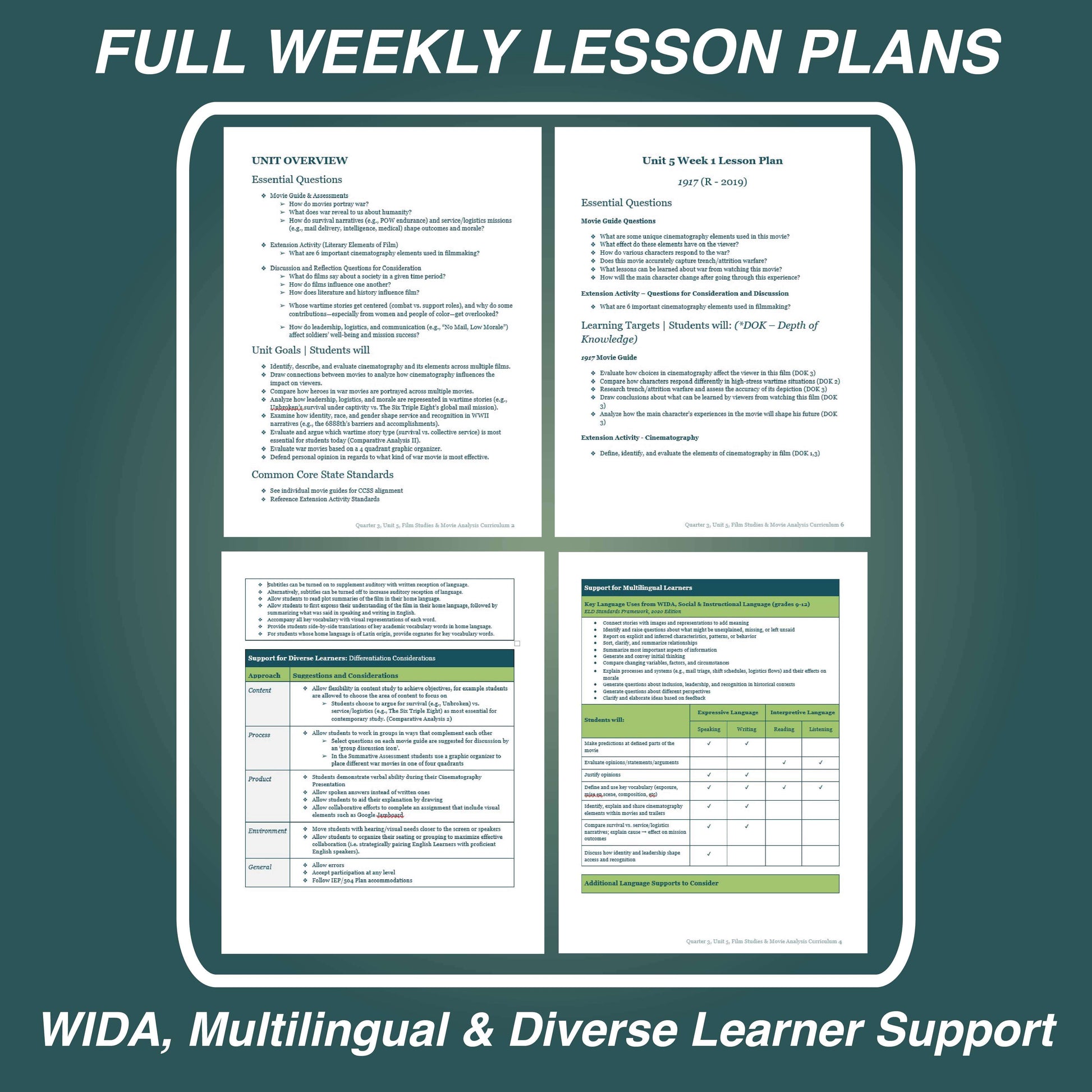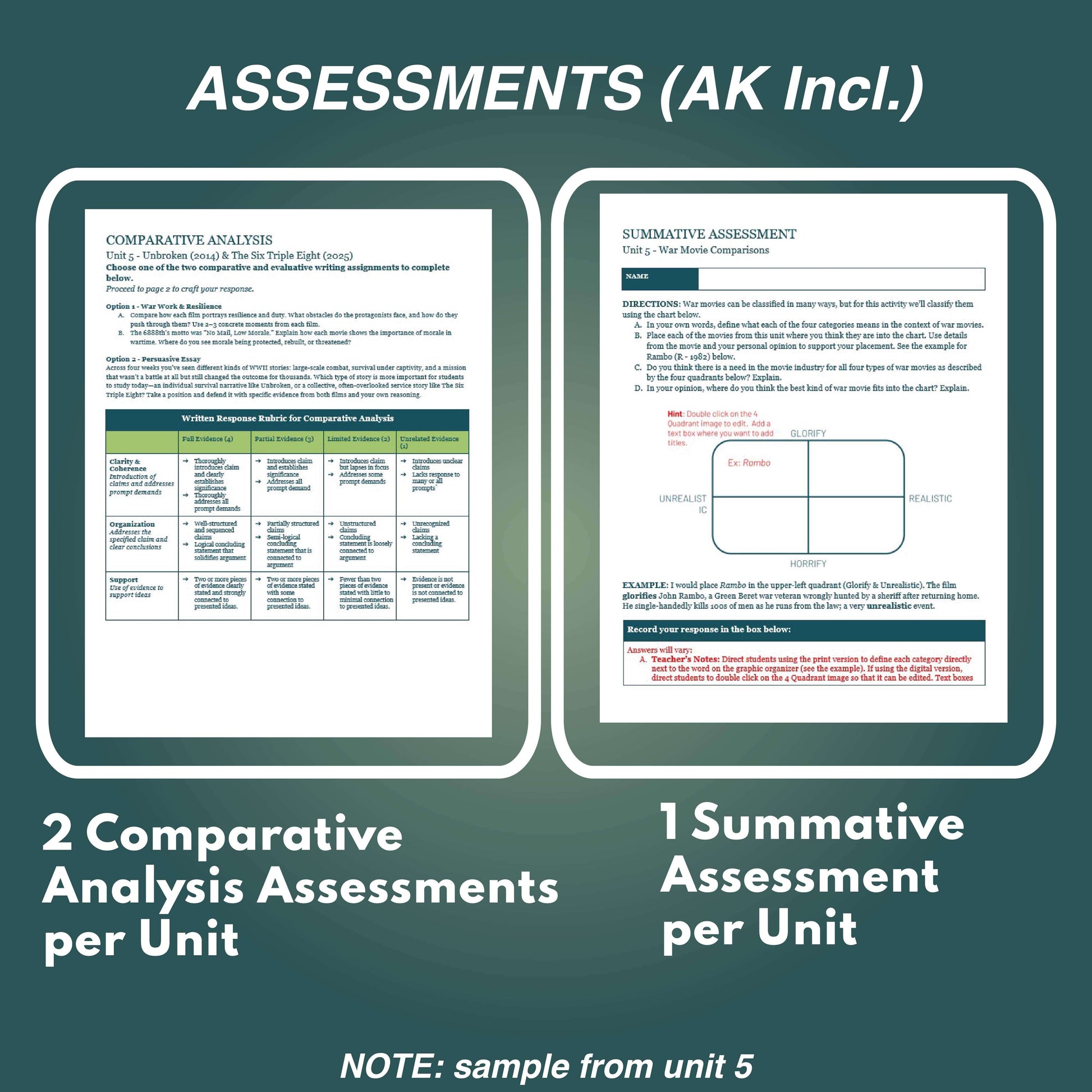K12 Movie Guides
Film Studies & Movie Analysis Elective Curriculum Free Preview for High School
Film Studies & Movie Analysis Elective Curriculum Free Preview for High School
Couldn't load pickup availability
This Film Studies & Movie Analysis Curriculum is a complete, standards-aligned film-analysis for entry-level high school classes (and mixed-readiness groups). This curriculum prioritizes clear scaffolds, broad appeal, and school-friendly films that are easy to stream and find.
Curious how the full program feels in the classroom? This free download lets you kick the tires on our teacher-facing planning, student-facing materials, and assessment quality—without buying anything first. It’s the same design language and scaffolding you’ll see in the quarter bundles and full-year set, trimmed just enough for preview.
What’s inside (files included)
- Planning & Pacing (Preview): Full-Year Educator Planning Guide: A condensed look at course goals, routines, spiraled extension strands, and quarter themes. You’ll see the structure that repeats across all units (day-by-day flow, film-guide cadence, CCSS coverage, supports for multilingual learners and diverse needs).
- Weekly Lesson Planning (Preview): Unit 1 Weekly Lesson Plan: One complete week laid out bell-to-bell (discussion openers, guided viewing prompts, formative checks) plus truncated views of the remaining weeks so you can see the throughline of targets, activities, and assessments.
- Extension Strand (Full student + key): Quarter 1 Extension: Loglines: Student Copy (SC) & Answer Key (AK). The full mini-unit students use to compress a film into a crisp 1–2 sentence pitch (protagonist, antagonist, setting, rising action, problem, resolution). Includes model analyses (e.g., Jurassic Park, Home Alone), fix-the-logline tasks, and templates.
- Assessment (Full): Unit 2 Summative Assessment (Underdog Theme). Students define/defend “underdog” and “hero,” then connect film ideas to real life through a short community interview and reflection. Teacher notes and prompt variations included.
- Film Access (Full): Movie Streaming Guide (Full Course). A simple spreadsheet showing each title and where it’s currently available to stream with a standard account on Disney+, Netflix, or Amazon Prime Video, plus a quick filter by quarter/unit. (Availability reminder: As of 2025, every featured film streams on one or more of the three platforms above, but catalogs change. Always verify availability before the lesson day and keep a backup plan ready.)
What you’ll learn from the preview
- How weekly plans balance discussion, guided viewing, and writing.
- The level, tone, and specificity of Movie Guide prompts and extensions.
- How assessments map to unit themes and Common Core anchor standards.
- The turnkey supports (sentence frames, CER templates, organizers, differentiation and WIDA-aligned language goals).
How to use this sneak peek
- Test-drive a mini-lesson from the Unit 1 week included.
- Audit alignment by skimming targets and the extension’s SC/AK pair.
- Plan logistics with the Streaming Guide so you know what’s easy to access.
- Share with teammates/admin to showcase rigor + accessibility before purchase.
Who this is for
Teachers seeking an entry-level, school-friendly film curriculum built around mainstream, easy-to-stream movies—with clear scaffolds for mixed-readiness classes.
Tips, Tricks, & Strategies for Using the Full Year Curriculum
- Build a “pause-points” plan. Pre-mark the timestamp for each question and pause the film there. This preserves the chronological integrity of the guides and prevents spoilers while students write/turn-and-talk.
- Verify timestamps & versions. Streaming cuts (ads, 4K re-releases) can shift timecodes by a minute or two. Preview the first week’s pause-points and adjust your copy once; reuse that copy every period.
- Front-load key terms. Post 4–6 academic words you’ll need (e.g., motif, foreshadowing, agency, fidelity/adaptation). Quick 90-second “define + example from yesterday” routines unlock richer responses.
- Use captions actively. Turn subtitles/CC on by default; teach students to cite lines precisely and to collect vocabulary from captions as evidence.
- Mini-rubrics at hand. Print (or project) the 3-row rubric used across Comparative Analyses and essays (Claim • Evidence • Reasoning). Reference it during pauses so students know exactly how to level-up.
- Plan opt-ins for sensitive content. Flag moments (e.g., violence, death) and prep silent options (brief written reflection in hallway, transcript read, clip-only viewing). Keep participation creditable without penalizing.
- Parent communication ready. Use the included permission slip at the beginning of each quarter with ratings/permission needs (e.g., Macbeth (2015) is R for violence).
- Absent-student kit. Create your own folder with: plot synopsis, 2 stills or captions from key scenes, and the 2–3 most critical questions. Students complete an “evidence from synopsis/stills” version to stay on track.
- Academic integrity & AI. For take-home writing, require in-class planning notes (bullets, quotes, timestamps) turned in with the draft; this discourages copy-paste and keeps analysis anchored to your viewing.
Frequently Asked Questions
Q: Do I have to use all of the films included in each unit?
A: No, although it is recommended. When another film not included is more desirable for your students, it should be noted that teachers may need to prepare movie viewing questions and adjust any activities or assessments to reflect the content of the substituted film.
Q: Can Film Studies & Movie Analysis Curriculum be substituted to fulfill high school graduation requirements for an English Language Arts course?
A: Film Studies & Movie Analysis Curriculum was written with the purpose of supporting elective or enrichment selections at the high school level. Therefore, not all Common Core English Language Arts standards are explicitly introduced and spiraled as would be expected with a more traditional English course. However, K12Movieguides.com recommends working with your school or district if there is interest in using Film Studies & Movie Analysis Curriculum as a resource to supplement a core course. A Standards Alignment Guide has been provided in the “Get Started” materials for the entire year course for your reference and use.
Q: Can Film Studies & Movie Analysis Curriculum be used at the middle school level?
A: Yes. It is recommended that instructors consult with their site administrator or administrative team to determine the appropriateness of the themes and content included in each unit in relation to a middle school-age audience.
Q: What if my class can’t finish a film before the assessment window?
A: Use the guide’s pause-points to split the film across days and push any end-of-film essays by one class. For comparisons, allow clip-based evidence from previewed scenes only; do not require scenes students haven’t watched.
Q: Can I show clips instead of the full film?
A: Yes—especially for pacing or permissions. Choose clips that align with the existing question timestamps and keep the chronological flow. Document the clip start/stop times on the guide so students can cite accurately.
Q: How do I handle PG-13/R content and permissions?
A: Follow site policy. Provide a one-paragraph alternate task (same skills: theme/argument/craft) drawn from the same film’s trailer, stills, and script excerpts or from a school-approved alternate title for which you will need to create your own movie guide questions and alter the provided assessments.
Q: How do I support English Learners without diluting rigor?
A: Keep captions on; pre-teach 4–6 words; offer sentence starters (“One film-craft choice that strengthens the theme is…”) and allow oral responses recorded on a device for select prompts. Grade with the same rubric.
Q: What if different classes are using different streaming versions (ads, runtimes)?
A: Instruct students to cite scene description + approximate time (e.g., “Rumble under the highway, ~1:30”) so evidence stays verifiable even if timestamps drift.
Q: Can I swap film order inside a unit?
A: You can, but keep each unit’s Comparative Analysis pairings intact (Weeks 1–2 together; Weeks 3–4 together; Week 5 feeds the Summative). If you reorder, update pacing notes and any lead-in vocabulary.
Q: How should students use AI tools (if allowed by school policy)?
A: Permit AI for brainstorming or clarifying vocabulary only; prohibit AI-written evidence/analysis. Require in-class notes with timestamps to demonstrate original viewing-based thinking.
Q: How do I adapt for students with sensory sensitivities?
A: Offer volume-reduced seating, noise-reducing headphones (if allowed), or a transcript + stills alternative for intense scenes; grade the same skills with equivalent prompts.
Does K12MovieGuides offer two full Film Elective Curriculum Options?
Yes! Read below to find out which one is best for your needs?
Film Studies & Movie Analysis: a plug-and-play film curriculum that every class can access?
- This is a lighter, more accessible companion to our original program—built for introductory learners and mixed-readiness classes. It uses mainstream, easy-to-stream films available on the big three platforms (Disney+ / Netflix / Amazon Prime Video) with strong subtitles for accessibility.
- Audience: Grades 9–12 general ELA, newcomers, co-taught classes.
- Content: School-friendly slate (mostly G–PG-13), with only two R-rated titles
- Scope: 36 movie guides, one simple schedule (no alternates to juggle), streamlined comparative tasks.
- Standards: Hits core CCSS strands while keeping cognitive load manageable.
Film as Literature & Cinematic Arts: a deep-dive, university-prep experience with canonical titles.
- This is designed for college-level or highly skilled high school students who thrive on challenging texts and seminar-style analysis. It features more mature, gold-standard films widely recognized for film-study rigor.
- Audience: Honors, AP bridge, dual-enrollment, advanced electives.
- Content: Heavier themes and academic film language; titles chosen for canonical significance and depth.
- Scope: 45 movie guides (vs. 36 in the other edition), with alternate schedules and assessments to support varied pacing and deeper comparative work.
- Outcomes: Extended research, richer theory/application, and sustained argumentative writing—ideal for students aiming at college-level analysis.
Share
